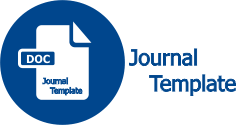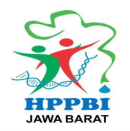Effectiveness of Soursop Leaf Extract (Annona muricata) and Ylang-ylang Flowers (Cananga odorata) as a Larvasicide to Remove Mosquito Flars
DOI:
https://doi.org/10.25134/quagga.v17i1.335Keywords:
Larvicides, Soursop Leaf, Ylang-ylang Flower, Mosquito larvaeAbstract
One of the few countries with high humidity levels, it can cause poor air quality and an increase in diseases such as dengue fever. Dengue fever is a disease caused by the Aedes aegypti mosquito. Due to the large number of cases of dengue fever, various types of drugs have emerged to treat this condition. Predator, genetics, pathogen and parasite control, as well as physical, biological and chemical control are several ways to control larvae. Efforts to control mosquitoes can be made by using mosquito repellent repellents by using plants that come from nature which contain essential oils as environmentally friendly repellents. One of the plants that contain essential oils is soursop leaves and ylang-ylang flowers. The aim of this research was to determine the effectiveness of soursop leaves and ylang-ylang flowers as larvicides to eradicate mosquito larvae. This research is experimental in nature with the samples used, namely Culex type mosquito larvae. This research was conducted at the Biology Laboratory, Faculty of Teacher Training and Education, Universitas Muhammadiyah Surakarta. The samples for this study were 28 containers with an initial number of larvae of 25 individuals. The results showed that there were several mosquito larvae that experienced death with the lowest mortality in F1D1 with an average of 20 deaths and the highest mortality in F3D3 with an average of 23.67 deaths. Mosquito larvae experienced death with the highest time at 9 hours of observation and the time of death decreased at 12 hours of observation. The use of larvicidal extracts from soursop leaves and ylang ylang flowers is more effective in reducing the number of mosquito larvae with F3 having the highest average number of deaths with a dose of 2.5 g of soursop leaves: 7.5 ylang ylang flowers within 9 hours.
References
Ahyanti, Mei & Yushananta, Prayudhy. (2022). Kombinasi Ekstrak Daun Tapak Dara (Catharanthus roseus) Dan Daun Sirsak (Annona muricata) Sebagai Bio-Larvaaida. Jurnal Ruwa Jura, 16(3), 113-123. https://doi.org/10.26630/rj.v16i3.3611
Akbar, Fajar., Rivaldy, Willyam., Ahmad, Haeranah., Akur., & Rusdi, Muhammad. (2023). Efektivitas Daun Sirsak (Annona muricata) dalam Mematikan Larva Nyamuk Aedes aegypti. Jurnal Penelitian Kesehatan Suara Forikes, 14(1),6-9. http://dx.doi.org/10.33846/sf14nk303
Dhenge, Neumensia Febrianti., Pakan, Prisca Deviani., & Lidia, Kartini. (2021). Uji Efektivitas Larvasida Ekstrak Daun Pepaya (Carica papaya) Terhadap Mortalitas Larva Vektor Demam Berdarah Dengue Aedes aegypt. Cendana Medical Journal, 21(1), 156-163. https://doi.org/10.35508/cmj.v9i1.4950
Dias, Aindi Putri., Farhan, Antofhani.,& Zuhroh, Ita Ni’matuz. (2019). Uji Ekstrak Biji Buah Pepaya (Carica papaya L.) Dan Bunga Melati (Jasminum sambac L.) Sebagai Larvasida Aedes aegypti. Jurnal Insan Cendekia, 6(2), 60-66. https://doi.org/10.35874/jic.v6i2.538
Fikri, Zainal., Ernawati, Fitria & Jiwintarun, Yunan. (2020). Formulasi Sediaan Spray Ekstrak Etanol 96% Buah Terung Ungu Panjang (Solanum melongena L.) dan Bunga Kenanga (Cananga adorata) Terhadap Kematian Nyamuk Aedes sp. Jurnal Analis Medika Biosains (JAMBS), 7(1),56-67. https://doi.org/10.32807/jambs.v7i1.177
Ikhsanudin, Azis & Aryuliana, Anissa. (2022). Uji Aktivitas Larvasida Granul Ekstrak N-Heksan Bunga Kenanga (Canangium odoratum Baill.) Pada Larva Nyamuk Aedes Aegypt. Prosiding Seminar Nasional Pusat Informasi Dan Kajian Obat, 1(1), 392-401.
Ishak, Nuning Irnawulan., Kasman., & Chandra. (2019). Efektivitas Ekstrak Kulit Buah Limau Kuit (Citrus amblycarpa) sebagai Larvasida Aedes Aegypti Instar III. Jurnal MKMI, 15(3), 302-310. https://doi.org/10.30597/mkmi.v15i3.6533
Kusumawati, Wira Desy., Subagiyo, Agus., & Firdaust, Mela. (2018). Pengaruh Beberapa Dosis dan Jenis Ekstrak Larvasida Alami Terhadap Kematian Larva Nyamuk Aedes aegypti. Jurnal Keslingmas, 37(3), 283-295. https://doi.org/10.31983/keslingmas.v37i3.3875
Maulita, Cahya. (2021). Efektivitas Ekstrak Etanol Bunga Kenanga (Cananga odorata) Sebagai Liquid Electrik Untuk Insektisida Nyamuk Aedes Aegyti. (Undergraduate Thesis).
Melliska, Cut Ella. (2022). Efektivitas Larvasida Ekstrak Daun Sirsak (Annnona muricata L.) Terhadap Kematian Jentik Culex Sp (Studi Kasus Di Gampong Purwodadi, Kecamatan: Kuala Pesisir, Kabupaten Nagan Raya). Jurnal Kesehatan Masyarakat, 6(2), 1782-1786. https://doi.org/10.31004/prepotif.v6i2.4592
Putri, Irma Novita Andini & Yushananta, Prayudhy. (2021). Efektivitas Ekstrak Daun Pandan Wangi (Pandanus amaryllifolius) Sebagai Biolarvasida Terhadap Larva Culex Sp. Jurnal Kesehatan Lingkungan Ruwa Jurai, 15(3),109-117. http://dx.doi.org/10.26630/rj.v15i3.3067
Simbolon, Veronika Amelia & Martias, Indra. (2020). Ekstrak Daun Mengkudu dan Daun Pepaya Sebagai Larvasida Alami terhadap Kematian Larva Nyamuk Aedes Aegypti. Jurnal Ilmu Kesehatan Masyarakat, 9(1), 12-18. https://doi.org/10.33221/jikm.v9i01.459
Syazana, Nurish & Porusia, Mitoriana. (2020). Kajian Literatur Efektivitas Biolarvasida Ekstrak Daun Sirsak Terhadap Jentik Nyamuk Aedes aegypti. Environmental Occupational Health and Safety Journal, 2(2),203-220. https://doi.org/10.24853/eohjs.2.2.203-220
Ugochi, N. L, Oluwasanmi, L. I., & Adesayo, A. S. (2019). Qualitative And Quantitative Phytochemical Evaluation And Qualitative And Quantitative Phytochemical Evaluation And Mineral Contents Of The Leaf Of Annona. Journal of Medical Pharmaceutical And Allied Sciences, 8(1), 2045-2051. https://doi.org/10.22270/jmpas.v8i1.793
Downloads
Published
How to Cite
Issue
Section
License
Copyright (c) 2025 Sarah Annisa Alifvina, Aminah Asngad

This work is licensed under a Creative Commons Attribution-ShareAlike 4.0 International License.




















